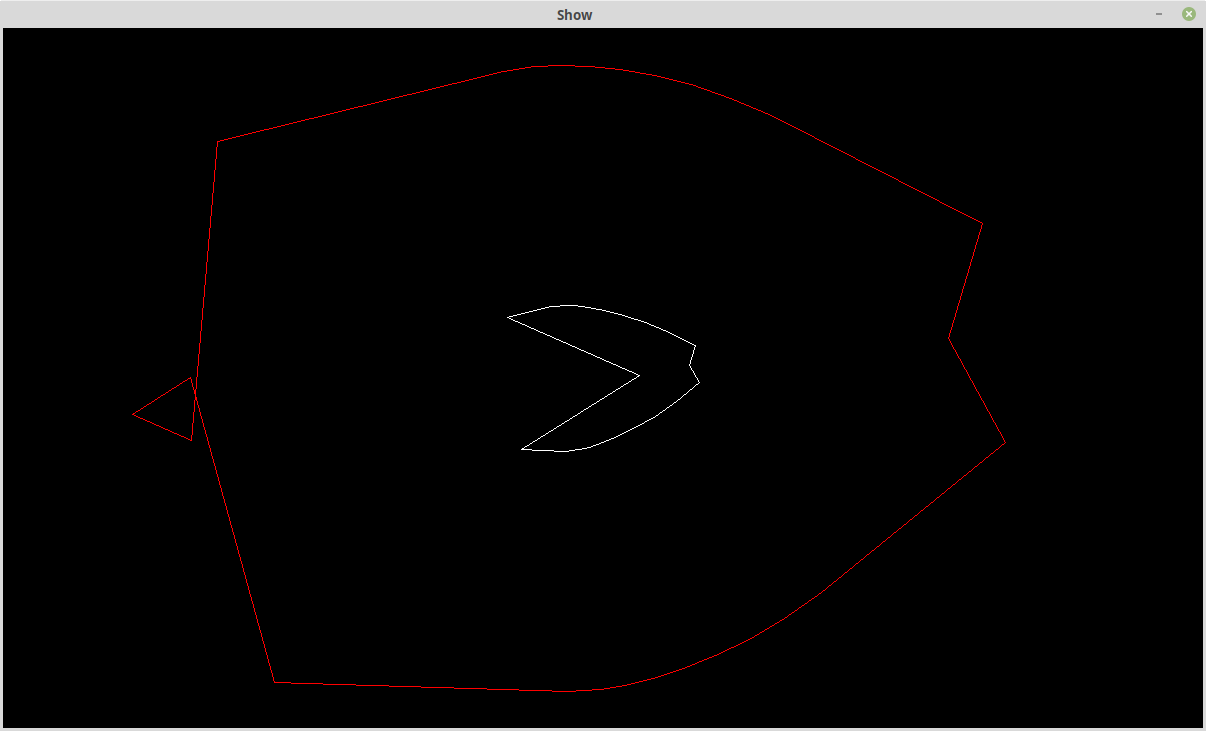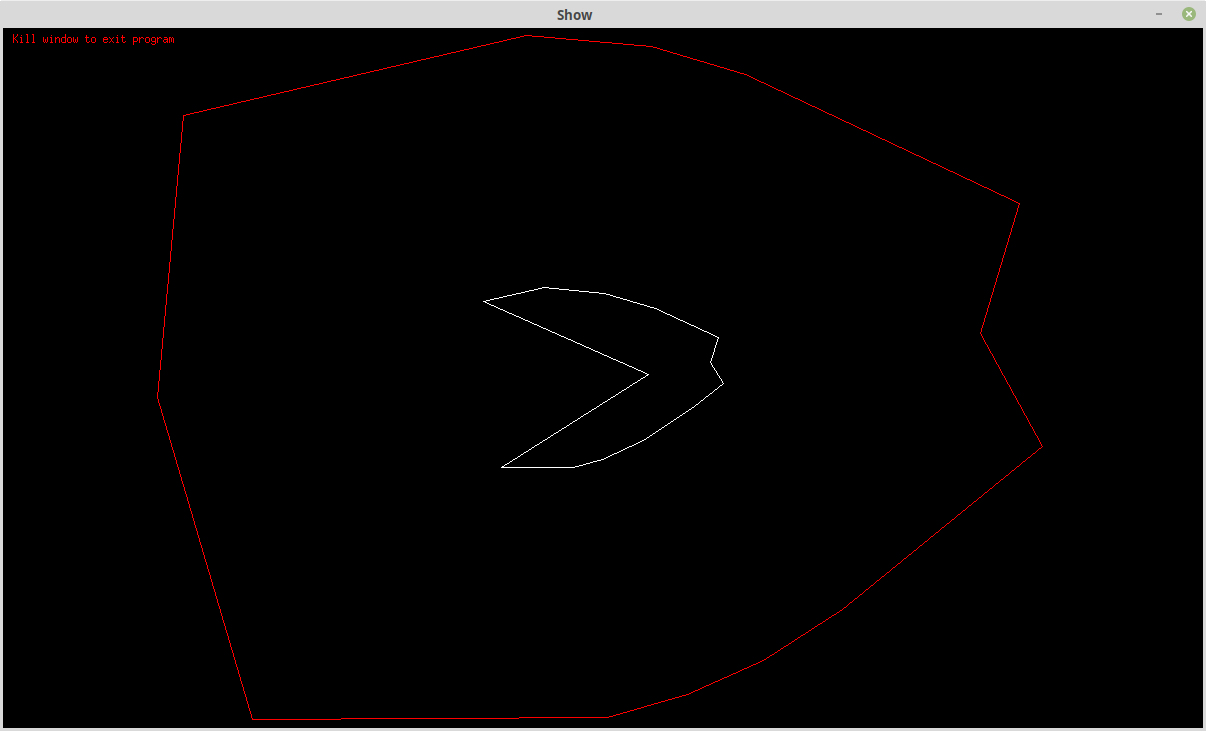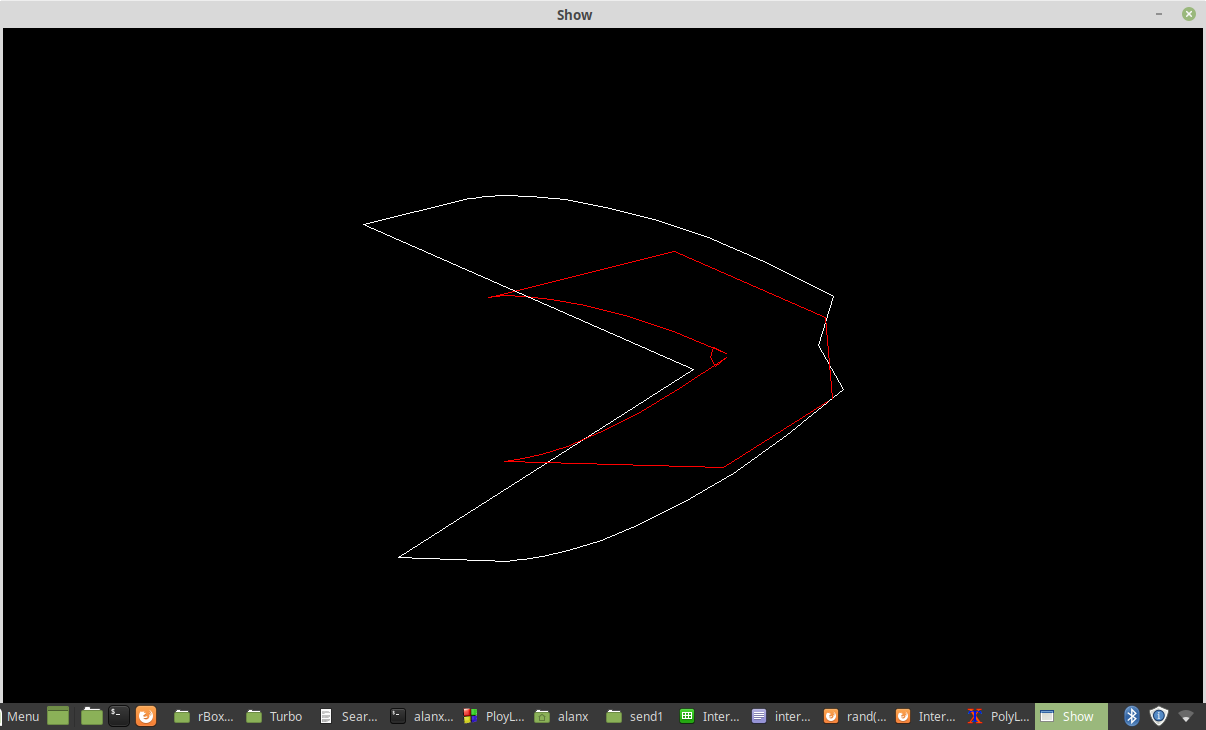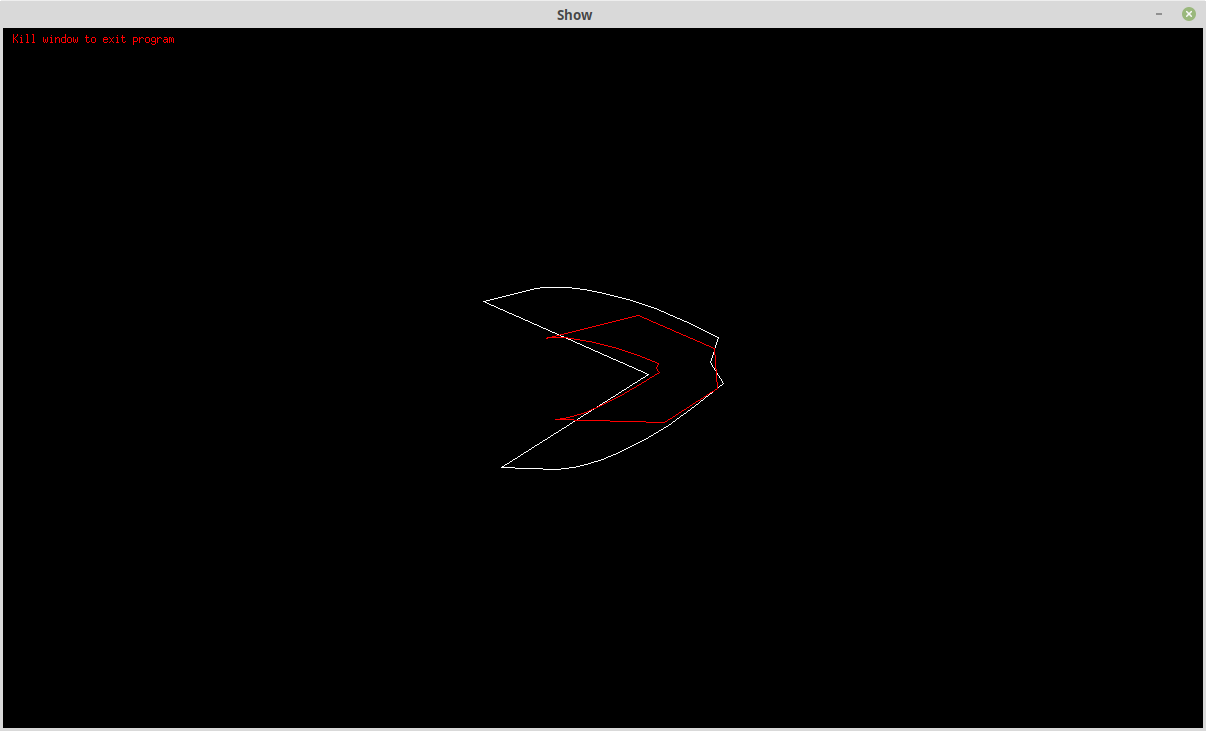-
Cross-Over Removal
06/18/2019 at 10:28 • 0 commentsCross-Over Removal
Added code to remove co-linear points (spikes) and cross-overs. While cross-over removal is rather ambiguous (i.e. which is the cross-over and which is the polyline?). Rather than get too "deep", I just decided to limit the search to only half of the polyline (by point count). Here is the expansion case, before:
![]()
and after:
![]()
Here is the contractions case, before:
![]()
and after:
![]()
Well, that just about does it.
AlanX
-
Basic Code
06/08/2019 at 03:06 • 0 commentsBasic Code
The basic code is not too bad.
Here is my segment intersection routine:
int intersect( double px0,double py0,double px1,double py1, double px2,double py2,double px3,double py3, double *px,double *py) { double det,s,t; // Test if co-linear det=(px3-px2)*(py0-py1)-(px0-px1)*(py3-py2); if (fabs(det)>1e-12) { // Find ray intersection s=((px1-px0)*(py0-py2)-(py1-py0)*(px0-px2))/det; t=((px3-px2)*(py0-py2)-(py3-py2)*(px0-px2))/det; *px=px0+t*(px1-px0); *py=py0+t*(py1-py0); if ((s>=0.0)&&(s<=1.0)&&(t>=0.0)&&(t<=1.0)) { // Segment Intersection return 1; } else { // Ray Intersection return 2; } } else { // In my special case (for a polyline), I want the last point. *px=px3; *py=py3; return 0; } }The offset routine, considers the cases returned from the intersection routine:
int makeOffset( double x1,double y1,double xc,double yc,double x2,double y2,double Offset, double *xi1,double *yi1,double *xi2,double *yi2) { double dx1,dy1,dl1,xo1,yo1,xc1,yc1; double dx2,dy2,dl2,xo2,yo2,xc2,yc2; double xi,yi; int Test; // Segment lengths dx1=xc-x1; dy1=yc-y1; dl1=sqrt(dx1*dx1+dy1*dy1); dx2=xc-x2; dy2=yc-y2; dl2=sqrt(dx2*dx2+dy2*dy2); if ((dl1>1e-12)&&(dl2>=1e-12)) { dx1=dx1/dl1*Offset; dy1=dy1/dl1*Offset; dx2=dx2/dl2*Offset; dy2=dy2/dl2*Offset; xo1=x1-dy1; yo1=y1+dx1; if (Offset>=0.0) { xc1=xc-dy1+dx1; yc1=yc+dx1+dy1; xc2=xc+dy2+dx2; yc2=yc-dx2+dy2; } else { xc1=xc-dy1-dx1; yc1=yc+dx1-dy1; xc2=xc+dy2-dx2; yc2=yc-dx2-dy2; } xo2=x2+dy2; yo2=y2-dx2; Test=intersect(xo1,yo1,xc1,yc1,xc2,yc2,xo2,yo2,&xi,&yi); if (Test==1) { // Segment Plus Offset Intercept *xi1=xi; *yi1=yi; *xi2=xi; *yi2=yi; return 1; } else if (Test==2) { double area=((y1-y2)*(xc-x2)-(yc-y2)*(x1-x2)); if (((area<0)&&(Offset<0))||((area>0)&&(Offset>0))) { // External Ray Intercept (use truncated offsets) *xi1=xc1; *yi1=yc1; *xi2=xc2; *yi2=yc2; return 2; } else { // Internal Ray Intercept (use intercept) *xi1=xi; *yi1=yi; *xi2=xi; *yi2=yi; return 3; } } else { // Co-linear Intercept *xi1=xi; *yi1=yi; *xi2=xi; *yi2=yi; return 4; } } return 0; }One problem with the offset code is what to do with very short segments ?
My solution filter the polyline for:
- segments (points) that are nearly co-linear,
- segments that are very short.
// Filter Points (Open Polyline) Test=true; while (Test) { Test=false; int count=0; for (i=0;i<=N;i++) { count++; if (count>=3) { double area=fabs((Y[i-1]-Y[i-2])*(X[i]-X[i-2])-(Y[i]-Y[i-2])*(X[i-1]-X[i-2])); double length=sqrt((Y[i]-Y[i-2])*(Y[i]-Y[i-2])+(X[i]-X[i-2])*(X[i]-X[i-2])); if ((length*fabs(Offset)>area*100)||(fabs(Offset)>length*10)) { D[i-1]=true; Test=true; count=1; } } } int j=0; for (i=0;i<=N;i++) { if (!D[i]) { X[j]=X[i]; Y[j]=Y[i]; D[j]=false; j++; } } N=j-1; }Finally the make Polyline Offset code:
// Polyline Offset x1=X[N-2]; y1=Y[N-2]; xc=X[N-1]; yc=Y[N-1]; x2=X[0]; y2=Y[0]; makeOffset(x1,y1,xc,yc,x2,y2,Offset,&xc1,&yc1,&xc0,&yc0); NT=0; XT[NT]=xc0; YT[NT]=yc0; NT++; for (i=0;i<N;i++) { i1=(i+N-1)%N; ic=(i+N)%N; i2=(i+N+1)%N; x1=X[i1]; y1=Y[i1]; xc=X[ic]; yc=Y[ic]; x2=X[i2]; y2=Y[i2]; ezx_line_2d(disp,width/2+(int)(scale*x1),height/2-(int)(scale*y1),width/2+(int)(scale*xc),height/2-(int)(scale*yc),&ezx_white,1); Test=makeOffset(x1,y1,xc,yc,x2,y2,Offset,&xc1,&yc1,&xc2,&yc2); if (Test==1) { // Normal Intercept ezx_line_2d(disp,width/2+(int)(scale*xc0),height/2-(int)(scale*yc0),width/2+(int)(scale*xc2),height/2-(int)(scale*yc2),&ezx_red,1); XT[NT]=xc2; YT[NT]=yc1; NT++; } else if (Test==2) { // Truncated Intercept ezx_line_2d(disp,width/2+(int)(scale*xc0),height/2-(int)(scale*yc0),width/2+(int)(scale*xc1),height/2-(int)(scale*yc1),&ezx_red,1); ezx_line_2d(disp,width/2+(int)(scale*xc1),height/2-(int)(scale*yc1),width/2+(int)(scale*xc2),height/2-(int)(scale*yc2),&ezx_red,1); XT[NT]=xc1; YT[NT]=yc1; NT++; XT[NT]=xc2; YT[NT]=yc2; NT++; } else if (Test==3) { // Ray Intercept ezx_line_2d(disp,width/2+(int)(scale*xc0),height/2-(int)(scale*yc0),width/2+(int)(scale*xc2),height/2-(int)(scale*yc2),&ezx_red,1); XT[NT]=xc2; YT[NT]=yc2; NT++; } else if (Test==4) { // Polyline Co-linear Intercept ezx_line_2d(disp,width/2+(int)(scale*xc0),height/2-(int)(scale*yc0),width/2+(int)(scale*xc2),height/2-(int)(scale*yc2),&ezx_red,1); XT[NT]=xc2; YT[NT]=yc2; NT++; } else { // General Colinear Intercept ezx_line_2d(disp,width/2+(int)(scale*xc0),height/2-(int)(scale*yc0),width/2+(int)(scale*xc2),height/2-(int)(scale*yc2),&ezx_red,1); XT[NT]=xc2; YT[NT]=yc2; NT++; } xc0=xc2; yc0=yc2; }One problem with this code is that it uses the previous point. This can lead to an asymmetrical result.
Cross-Over Removal
Cross-over removal is the next challenge.
AlanX
 agp.cooper
agp.cooper


